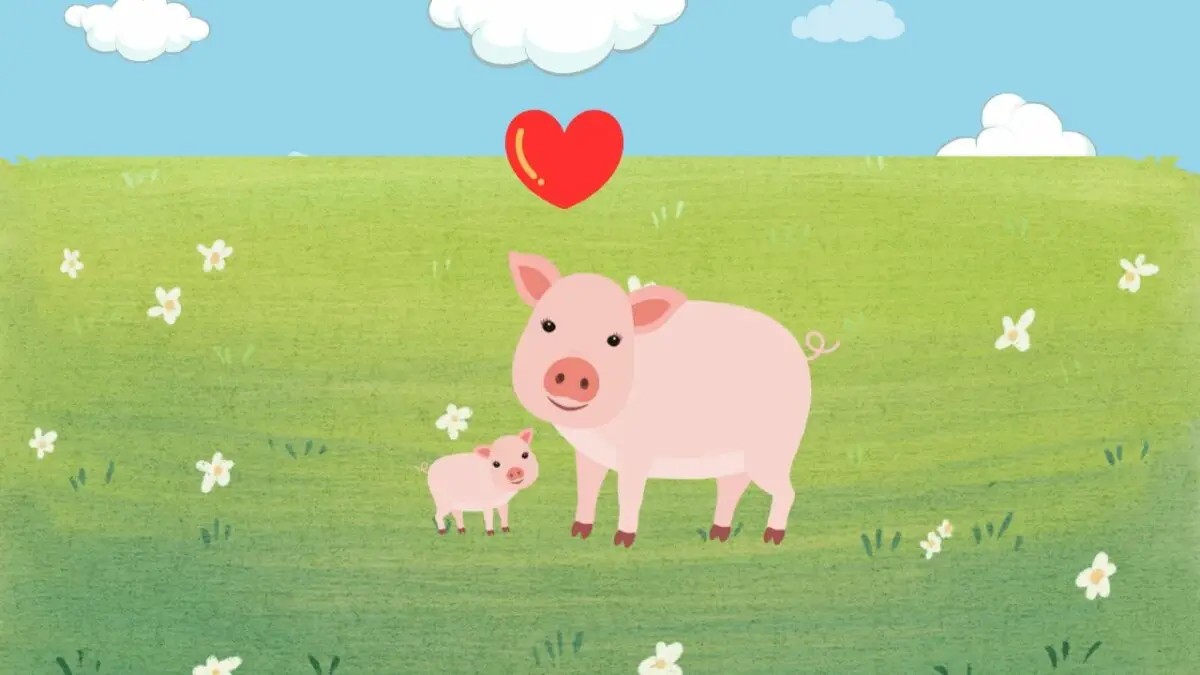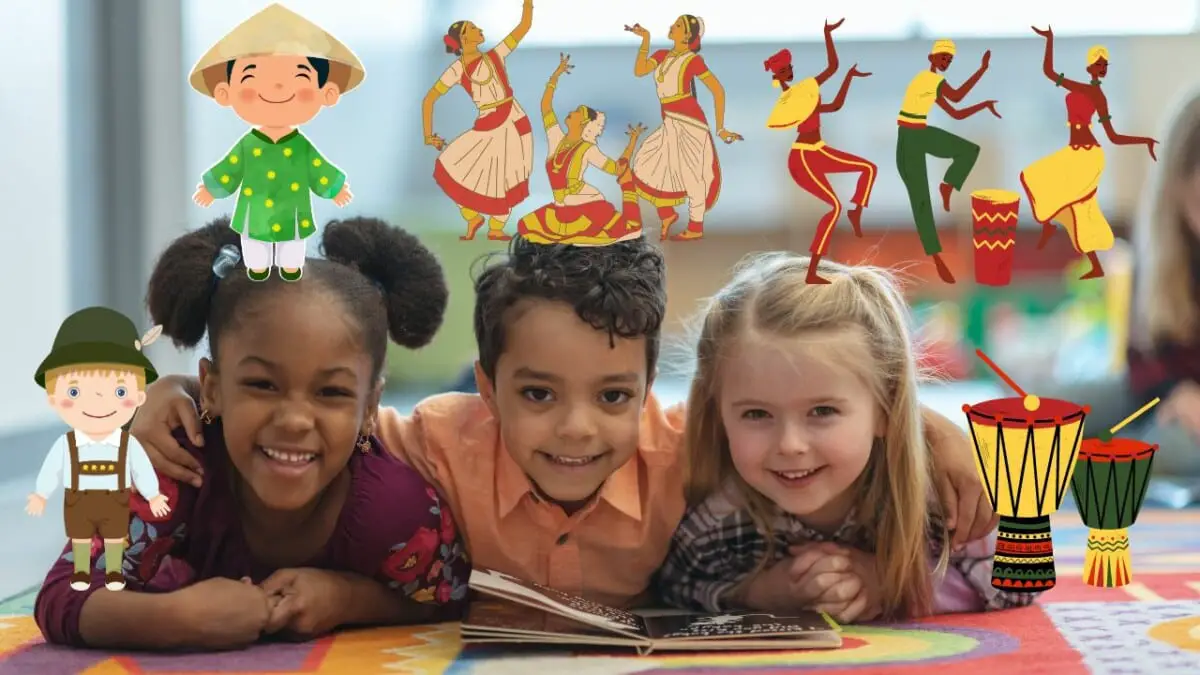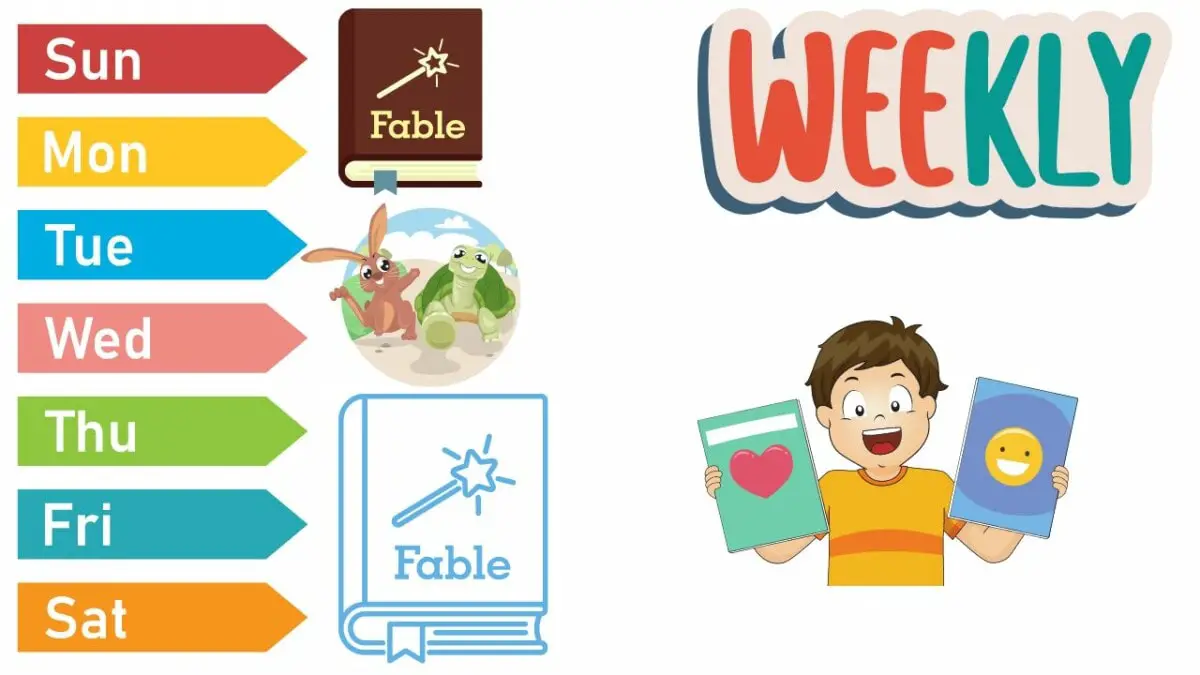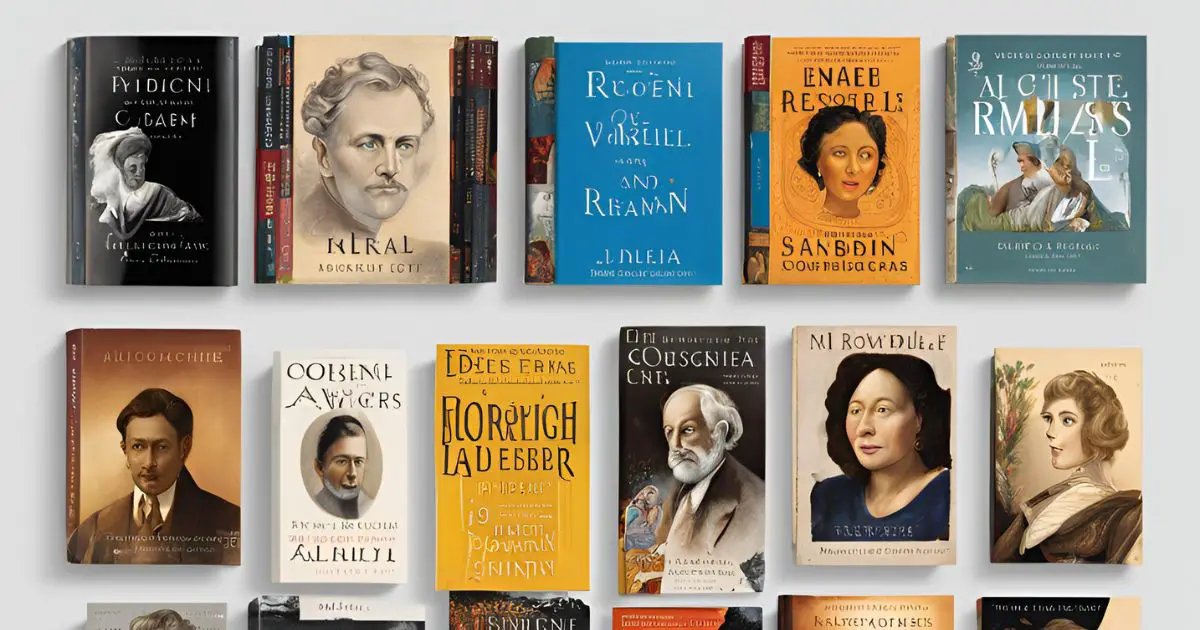Fables, often showcasing talking animals and moral lessons, hold a timeless charm in the enchanting realm of children’s literature. Such captivating stories profoundly shape a child’s development.
The impact of fables extends beyond mere surface fascination with talking rabbits or wise owls. Into adulthood, they offer invaluable benefits. We should undertake a journey, exploring the rich tapestry of advantages that fable books present to young readers.

The Magic of Fables – 16 Key Benefits
Delving into the benefits necessitates an understanding of the fables’ essence. These are short stories, often presenting animals endowed with human traits, that authors carefully construct to impart moral lessons. Aesop’s Fables, which include enduring classics such as “The Tortoise and The Hare” or “The Boy Who Cried Wolf,” have held young minds captivated for centuries, and continue to do so. The narratives’ simplicity enables children at different developmental stages to comprehend them easily, rendering them an optimal choice.
1. Building Moral Foundations
The ability of fables to instill robust moral values in children constitutes one primary merit. As these tales unfold, they subtly introduce young readers to concepts such as honesty, kindness, perseverance, and responsibility. Consider “The Ant and the Grasshopper,” a classic fable for instance. Children grasp the significance of industriousness and future planning through the diligent work of ants juxtaposed with the carefree attitude of grasshoppers.
2. Fostering Empathy and Emotional Intelligence
The vibrant tapestry of fables showcases characters grappling with relatable emotions and dilemmas. These anthropomorphic creatures’ struggles and triumphs, when connected to children, foster their development of empathy and emotional intelligence. Confronted with the moral quandaries presented in these stories, young readers learn how to navigate complex feelings while understanding others’ perspectives.
3. Cultivating Critical Thinking Skills
Children, immersing themselves in the world of fables, receive encouragement to critically analyze character choices and their ensuing actions’ consequences. The inherently simple fables serve as the perfect canvas for young minds and allow an exploration of cause-and-effect relationships. This nurtures a foundation for analytical thinking, a skill that later life stages will greatly value.
“The Fox and the Grapes” fable warrants consideration. As children observe the fox’s futile attempts to attain those tantalizing grapes, they are urged to reflect on a concept, sour grapes. It serves not merely as an engaging narrative, but also provides them with metaphorical tutelage in managing disappointment with grace. Consequently, through this story, they develop critical thinking skills, specifically investigating alternative viewpoints while scrutinizing character motivations.
4. Enhancing Language Skills and Vocabulary
Fables employ deliberately concise language, catering to the developmental stages of young readers. This linguistic simplicity serves dual purposes. It not only facilitates comprehension but also enriches the child’s vocabulary. Varied forms of language within fable narratives contribute directly to linguistic diversity. This lays an exceptionally robust foundation for effective communication.
“The Boy Who Cried Wolf” fable, through its repetitive narrative, not only reinforces essential vocabulary but also underscores the repercussions of dishonesty. Fables thus serve as potent instruments in children’s linguistic growth due to their dual role, enriching language, and reinforcing morals.
5. Encouraging a Love for Reading
Fables’ enchanting world is a gateway to an enduring love for reading. The alluring narratives, amplified by the thrill of imminent moral revelations, establish positive associations with books. Unlike their more complex literary counterparts, these simple tales offer gentle induction into reading’s pleasures. They foster a narrative fondness that may unfold into a lifelong passion.

6. Fables as Catalysts for Parent-Child Bonding
Fables, beyond directly impacting children, uniquely facilitate meaningful parent-child interactions. When parents read fables with their offspring, a process transcending the literary realm, it becomes an experience shared between them. These instances of joint exploration and discussion not only engender enduring memories but also fortify values embedded within these tales.
Consider allocating dedicated time for shared reading; this allows discussions on the moral lessons each fable presents. Such an approach not only fortifies the bond between parent and child but also establishes a platform for open communication.
When children articulate their reflections regarding characters and actions in these stories, parents glean valuable insights into their child’s evolving moral compass. This is a crucial aspect of development at this stage.
7. Expanding Cognitive Horizons:
Young minds utilize fables as cognitive playgrounds, thus stimulating mental faculties and elevating cognitive abilities. The intricate narratives demand children to participate in active problem-solving. This fosters the growth of critical thinking skills. Moreover, by presenting complex moral dilemmas within these tales, fables incite a nuanced approach toward decision-making. They provoke children to analyze situations from various perspectives.

8. Cultural Understanding and Global Awareness:
Various cultures and traditions originate a diverse array of fables. Through these, children gain insights into societal norms and values. This exposure, transporting them to far-off lands inhabited by talking animals, nurtures their cultural sensitivity. It broadens their understanding of the world. Children intuitively absorb lessons about diversity, tolerance, and the richness of human experiences, as they encounter these unique tales.
9. Seeding the Roots of Empathy:
Fables are incubators of empathy, and feature anthropomorphic characters that confront relatable challenges. By resonating with the emotions and trials these fictional beings face, children cultivate a deep-rooted sense of empathy.
This emotional tethering to their environment transcends the fable’s boundaries. It affects not only their relations with peers, and family members but also encompasses an entire community perspective. Building meaningful relationships in their future lives relies significantly on the cornerstone of empathizing ability.

10. Nurturing Imagination and Creativity:
Fables weave vivid imagery and fantastical scenarios that ignite young readers’ imaginations. Visualizing the adventures of talking animals and moral quandaries sparks their creative faculties as children.
Such imaginative prowess contributes not only to artistic endeavors but also lays the groundwork for innovative mindset, and problem-solving in multiple facets of life.
11. Encouraging Reflective Practices:
Fables incite a critical self-reflection in children regarding their behaviors and choices, as they unveil moral lessons within the narratives. This introspective facet nurtures self-awareness and personal accountability. Kids start to internalize the repercussions of character actions, a process that sensitizes them to potential outcomes of their own decisions. In essence, this lays down foundational steps for responsible and thoughtful behavior from an early age.

12. Early Introduction to Storytelling Devices:
Fables, boasting concise and impactful narratives, function as the initial tutelage in storytelling for young readers. Their crystalline structure, conflict, and resolution forge a sturdy foundation of narrative arcs. Akin to an early immersion into storytelling techniques, children advance from this basic exposure to more intricate literary forms. It proves invaluable, cultivating a lifelong appreciation not only for literature but also for the art of weaving tales.
13. Positive Impact on Language Development:
Fables maintain a delicate balance between simplicity and richness in their employed language. This linguistic equilibrium facilitates children’s language development by introducing them to diverse vocabulary and sentence structures. The pervasive repetition within fables and reinforcement of crucial language elements contribute significantly towards improved verbal proficiency as well as communication skills.
14. Cultivation of Patience and Perseverance:
Themes of patience and perseverance often serve as the centerpieces in numerous fables, instilling within children an understanding of persistence amidst adversity. Emblematic figures such as the tenacious tortoise or diligent ant impart enduring lessons about the rewards one reaps from exhibiting unwavering determination.
Fable reading ingrains these virtues, serving as steadfast companions for children as they navigate through academic complexity and personal growth intricacies.
15. Building a Foundation for Ethical Decision-Making:
Every fable, at its core, serves as a moral compass that steers children toward ethical decision-making. It presents characters with moral dilemmas and their subsequent consequences.
This process establishes the groundwork for an internal ethical framework. Over time, as children mature, this foundation evolves into a guiding force in navigating complex ethics-related issues. It significantly contributes to individuals’ development, shaping them into people capable of making principled choices across their personal and professional spheres.
16. Stimulating Social Development:
Fables frequently portray characters who navigate social dynamics and relationships, thereby imparting crucial lessons on social behavior. Children extract insights into cooperation, friendship, and conflict resolution from the trials and tribulations these characters undergo. The fables’ embedded social cues bolster a child’s social intelligence. They equip them for fruitful interactions across an array of societal settings.
Essentially, fables offer benefits that transcend mere storytelling. They serve as catalysts for holistic development, nurturing not only cognitive growth but also emotional and social dimensions. Their influence on young readers persists, like a ripple effect through the tapestry of childhood life. These timeless tales shape individuals, endowing them with an abundant array of virtues and skills.
Research Insights – The Psychological Impact of Fables on Children
Personal experiences underscore the transformative power of fables, while research provides empirical support for their positive influence on child development. An exploration into this cognitive and emotional impact was conducted. The findings showed significant improvement in moral reasoning and emotional intelligence among participants exposed to regular fable-based storytelling, revealing not only the potency but also the measurable benefits of such narratives on a sample population of children.
Moreover, research indicates that children develop sequential thinking skills more effectively when exposed to the structured narrative format of fables. This research aligns with a widespread agreement among educators and child psychologists about the cognitive advantages tied to reading fables during formative years.

Practical Tips for Incorporating Fables into a Child’s Routine
Mastering the comprehension of fables’ advantages merely constitutes an initial stride. Parents, educators, and caregivers might consider implementing proactive strategies to infuse these perennial tales into a child’s everyday regimen. The ensuing are several pragmatic pointers aiming at amplifying the influence fables have on children’s development:
- Diversify Fable Selection: Explore fables from various cultures and traditions to expose children to a rich tapestry of moral lessons and storytelling styles.
- Interactive Storytelling: Encourage children to actively engage with the fables by asking open-ended questions. Prompt discussions about the characters’ decisions and the potential alternatives they could have chosen.
- Create a Fable Corner: Designate a cozy reading nook at home or in the classroom, adorned with illustrations from different fables. This designated space fosters a positive reading environment and reinforces the association between stories and learning.
- Extend Learning Through Activities: Complement fable reading with creative activities. Drawing, role-playing, or crafting based on fable themes enhances the child’s comprehension and retention of moral lessons.

The Everlasting Legacy of Fables in Adult Life
Fables continue to shape the character of maturing adolescents and eventual adults. Their early exposure cultivates a moral compass that later guides them through life’s difficulties. These narratives instill integral components of an individual’s ethical framework, values such as honesty, empathy, and resilience, all indispensable virtues in adulthood.
“The Goose That Laid the Golden Eggs” fable’s timeless significance prompts us to ponder. Is its value truly enduring? Beyond providing an immediate lesson on greed versus contentment, this narrative resonates with a wide range of individuals wrestling not only with wealth, success, and happiness but also related choices. We must remember that fables possess an allegorical nature that permits multi-layered interpretations. Thus, they impart wisdom capable of transcending societal shifts and even age itself.
Closing Thoughts
Constant change and evolving challenges mark our world. In this dynamic landscape, fables hold an enduring appeal for their ability to impart timeless wisdom. As we endeavor to foster the next generation, including deliberate doses of fables in a child’s literary diet surfaces as a potent strategy. Fables, beyond merely enchanting tales populated with talking animals, provide a roadmap. It constructs character, nurtures empathy, and cultivates moral integrity from its very inception.
On our collective journey towards personal and societal improvement, we must recognize the profound influence simple stories can have. We dive into a shared exploration of fables, aiming to shape future generations with the knowledge and essential virtues that pave the path for an empathetic, harmonious world. So, the next time you open the pages of a fable storybook for a child, remember that you are not just telling a story, you are sculpting a moral landscape that will endure long after the final page is turned.
By AL Tran





